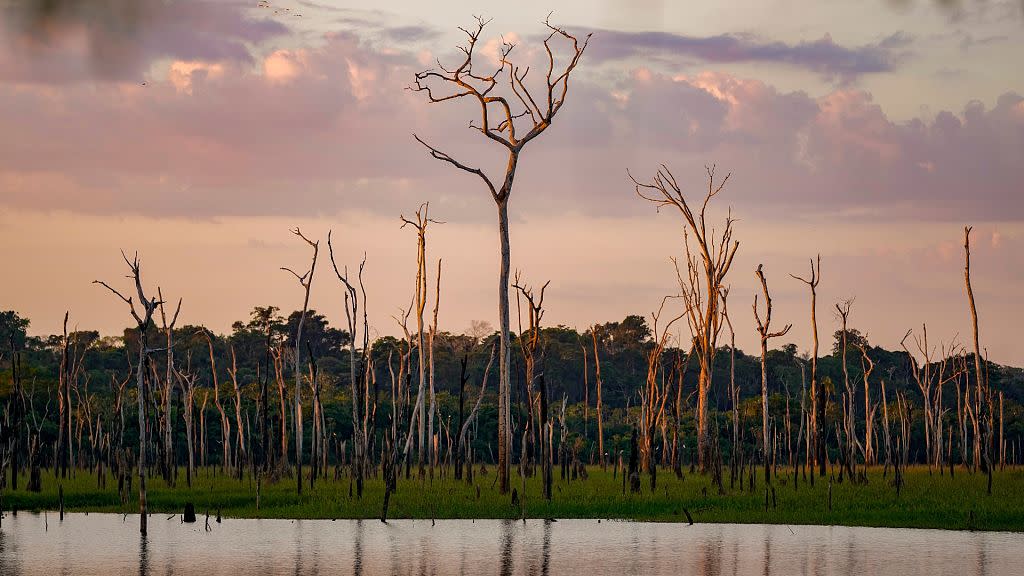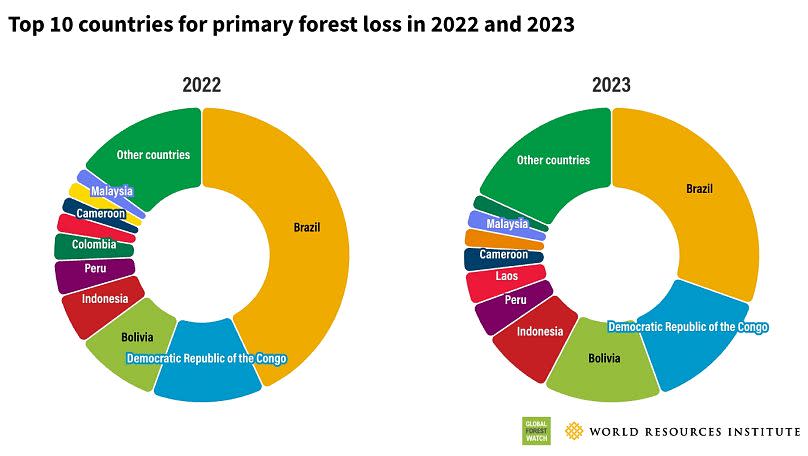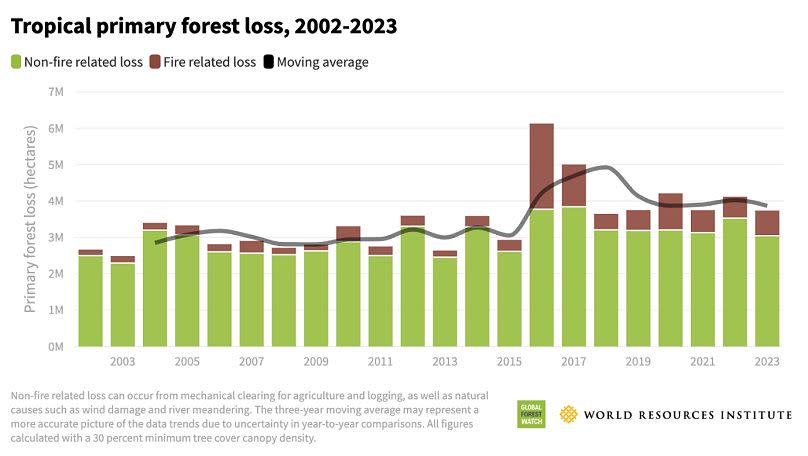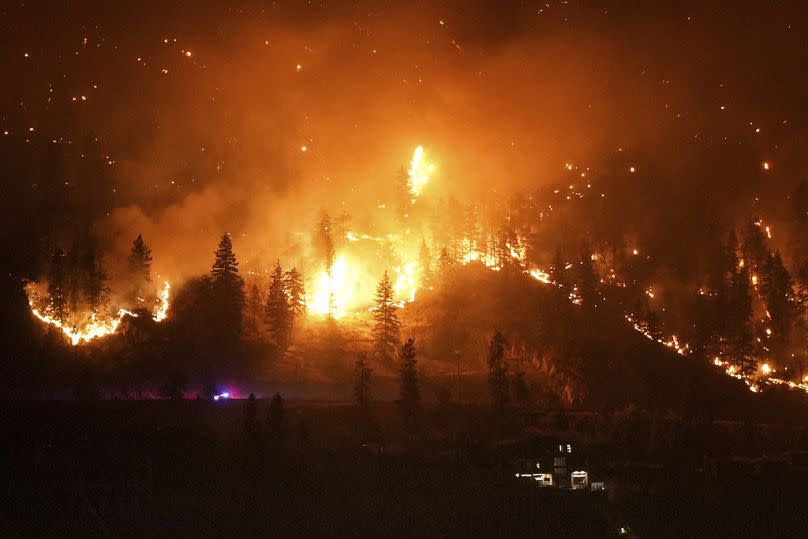‘Two steps forward, two steps back’: Forest loss falls in Brazil and Colombia but the world is still

Tropical forest loss in Brazil and Colombia fell dramatically last year but fires and a rise in tree felling elsewhere severely counteracted this progress.
In 2023, the tropics lost 3.7 million hectares of primary forest - an area just smaller than Bhutan, or the equivalent of losing 10 football fields per minute. That is around 9 per cent less tropical tree cover lost than in 2022, according to an annual survey by the research organisation the World Resources Institute (WRI) and the University of Maryland.
Global tree loss would have been much higher without improvements in Brazil and Colombia where the analysis finds that political action has had a massive impact.
But this reduction still doesn’t put the world on course to stop deforestation by 2030. There are just six years until the 2030 deadline to halt and reverse forest loss set by 145 nations at COP26 in 2021.

“The world took two steps forward, two steps back when it comes to this past year’s forest loss,” says Mikaela Weisse, Global Forest Watch director for WRI.
“Steep declines in the Brazilian Amazon and Colombia show that progress is possible but increasing forest loss in other areas has largely counteracted that progress.”
King of the forest: Poland's beech crowned European Tree of the Year 2024
Planting trees in the wrong places could be contributing to global warming, study reveals
Weisse adds that we need to learn from countries that are successfully slowing deforestation.
Why has deforestation slowed in Brazil and Colombia?
The report lists a change in political leadership as one of the primary reasons for Brazil and Colombia’s significant reductions in forest loss.
New leaders in both countries have placed an emphasis on environmental protection and forest conservation.
Under President Luiz Inácio Lula da Silva, Brazil saw a 36 per cent reduction in 2023 with primary forest loss reaching its lowest level since 2015. Since his re-election, Lula has revoked anti-environmental measures, recognised new Indigenous territories and strengthened law enforcement measures against practices such as illegal logging.

An even steeper improvement was seen in Colombia where primary forest loss halved in 2023 under President Gustavo Petro Urrego compared to 2022.
"The story of deforestation in Colombia is complex and deeply intertwined with the country’s politics, which makes 2023’s historic decrease particularly powerful,” says Alejandra Laina, natural resources manager at WRI Colombia.
“There is no doubt that recent government action and the commitment of the communities has had a profound impact on Colombia’s forests, and we encourage those involved in current peace talks to use this data as a springboard to accelerate further progress.”
The survey results from last year show that when forest protection becomes a priority for world leaders progress can be made.
Agriculture and fires are driving forest loss around the world
Fires accounted for just over half of all global forest loss in 2023. In tropical nations like Bolivia, they are often set by humans to clear land for crops or grazing.
Agriculture was a major driver of deforestation in the country with soy production accounting for nearly a million hectares of forest loss since the turn of the century. Laos too has seen agricultural expansion drive the loss of forests.
Governments' climate policies tackling deforestation and nature double in 12 months, study finds
The good foresters: Inside the Gabonese rainforest supplying Amsterdam’s lock gates
Climate change is also playing a role, however. In hot dry conditions, fires set by humans can easily spread out of control and Bolivia experienced record-breaking heat last year due to a combination of El Niño and global warming.
Fires also drove forest loss outside of the tropics with Canada experiencing a record-breaking year.

Widespread drought and increased temperatures driven by climate change have impacted much of the world. In Canada, it led to the worst fire season on record with five times more trees lost to blazes between 2022 and 2023.
"Satellite data helps us monitor the extent of wildfires over the years, including those leading to tree cover loss,” says Alexandra (Sasha) Tyukavina, associate research professor at the University of Maryland.
“This is especially important in understanding how extreme fire years - like Canada's 2023 record-breaking wildfire season - impact the world's forests over time."

